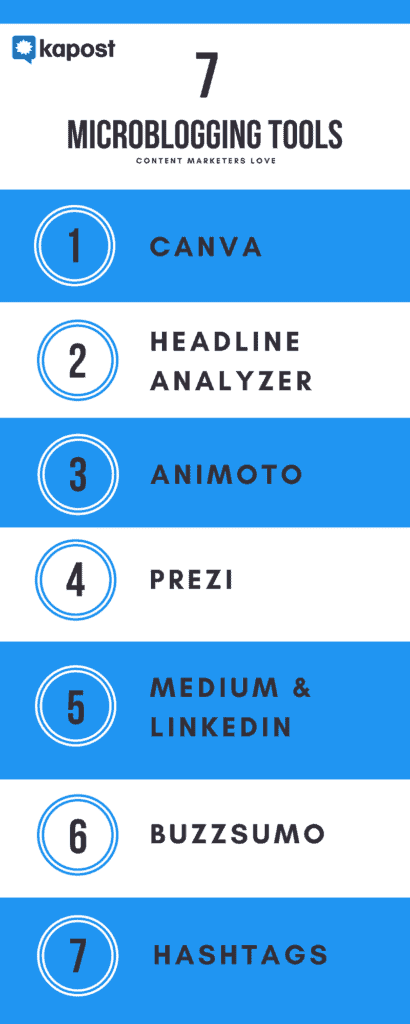Interactions on the internet are moment-driven according to Think with Google. Every moment and every subtle point of interaction matters when you’re creating content as a platform to scale relationships with your target buyers.
In an ideal world, every content marketer would have access to an expansive production budget for design, headline optimization, interactive widgets, and more. And money isn’t the only resource that content marketers need—we also need time to engage in creative and analytical processes that enable effective storytelling.
No matter what resources we have on hand as marketers, there are always opportunities to stretch our monetary and time budgets further. Of course, you need to back these decisions with research and insights.
Enter the concept of microblogging: the practice of delivering frequent yet short and impactful messages.
7 Microblogging Resources
Platforms for microblogging include Twitter, LinkedIn, Tumblr, and Medium. These social networks make it possible to distribute information rapidly, without the need for an in-depth production budget. Messages on these platforms also tend to have short lifespans, so the incorporation of visuals, data, and mini-videos are especially valuable for making an impact.
With microblogging strategy, every moment matters. To maximize your output, you need tools that can help you make high-quality creative assets in the minimal amount of time. Here is a list of free and low-cost resources to improve your workflow:
 1. Canva
1. Canva
Create DIY on-brand, custom visuals for blog posts, social updates, and ad campaigns. You can sign up for Canva for free, here.
2. Sharethrough’s Headline Analyzer
This advertising network has bundled its headline click-through data to help writers create more compelling short-form copy. It’s available for free, here.
3. Animoto
When you need to create motion graphics or explainer content on the fly, this resource can help. Pre-built templates and storyboards are available, with plans starting at $8/month.
4. Prezi
Create dynamic presentations that you can host on your website or on platforms like SlideShare. Prezi is available here, with pricing beginning at $7/month for personal use.
5. Medium & LinkedIn
These blogging platforms can help you connect with your target audiences more efficiently. On LinkedIn, you can post short status updates and share your content within groups. On Medium, you can apply to contribute to popular publications in your industry. Gain visibility through your existing following and by participating in discussions related to your content marketing interests.
6. BuzzSumo
This tool makes it easy to surface popular blog posts related to your company and industry on social media. Find what’s trending so that you can contribute to ongoing discussions.
7. Hashtags
Used as a filtering system for conversations, keyword-based hashtags have become a staple for social media platforms like Instagram, Twitter, and Facebook. Use hashtags to join existing discussions and to create a conversation hub around your industry and brand. Remember that hashtags are platform-agnostic.
Final Thoughts
Choose tools that alleviate pain points in your ongoing content operations. Measure the success of these tools by gauging the impact of your distribution strategy and any changes to your content quality. The goal of microblogging is to capture attention spans in a short amount of time. Experiment with videos, images, and presentations in bite-sized form. Make a bigger impact with fewer words. Use space and logistical constraints to foster creativity.


